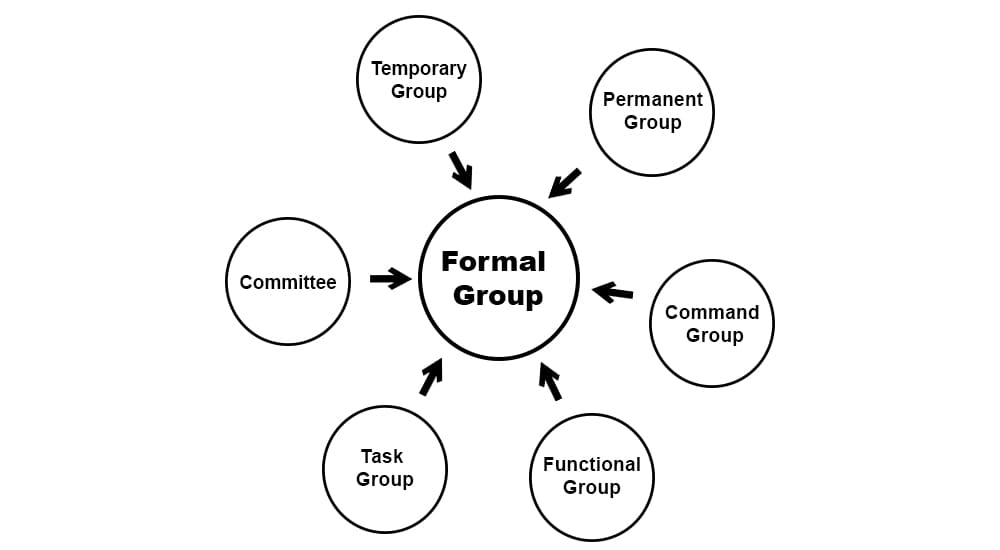Definition: A group that an organization deliberately creates to achieve an objective is known as a formal group. This group has defined criteria for members to join, an operating procedure and structure, and is led by a leader. A formal group is also known as a planned group.
Types of Formal Groups

A formal group can be defined in many ways. Some classifications are as follows:
- Temporary Group
- Permanent Group
- Command Group
- Functional Group
- Task Group
- Committee
Temporary Group: These groups are created for the short term and cease to exist once they achieve the objective.
Permanent Group: These groups are permanent and stay for a long time.
Command Group: These groups are permanent and exist in every organization. They can be called sections or departments.
Functional Group: These groups are defined according to group members’ positions in an organization, such as engineers, clerks, supervisors, etc.
Task Group: This temporary group is created to achieve a specific task. It usually consists of influential stakeholders.
Committees: Organizations appoint permanent members of this group to resolve issues. It consists of stakeholders with high positions.
Summary
Formal groups are regulated, have defined procedures, and are headed by a manager or group leader. They exist in all organizations and can be temporary or permanent. Permanent groups help organizations achieve their goals and run the organization, while temporary groups help achieve short-term objectives.

it is excellent work